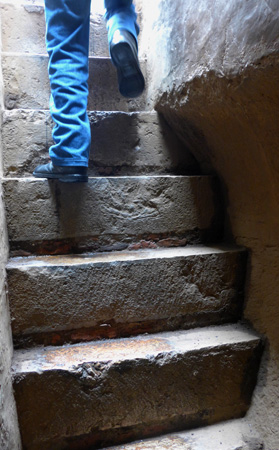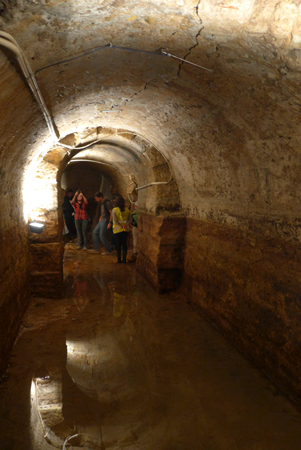
After years of visiting Lisboa, at long last I’ve been able to see what I consider one of the city’s holy grail sites: Roman galleries buried beneath the modern downtown district. They are difficult to visit because since the 1980s, the city government only opens them once or twice each year. I still remember them being open for one day only, & either I was too exhausted from doing tours to visit or just not in town. As of this post, the galleries are now open twice per year for three consecutive days during mid-April & the end of September. Nevertheless, lines are long & on-line reservations go quickly. Be prepared!
Roman presence in Lisboa has been well documented but not always well understood. After the 1755 earthquake & the consequent reconstruction of the city, the galleries were discovered around 1773. Authorities found only one inscribed tablet —currently housed in the Archaeology Museum— dedicated to the God of Medicine, Asclepius. But as to be expected, rebuilding took priority over investigation at the time, so it wasn’t until 1859 that a thorough study could be performed. The original hypothesis claimed that the galleries were actually baths… ah, but that idea has been discarded… more on that in a bit. The granddaddy of Lisbon history, Augusto Vieira da Silva, drew the following sketch of the galleries in 1934:

I originally went on a Saturday, thinking I’d get in. When I saw the line, I immediately lost interest. Why not just go on Sunday when there would be fewer people? Of course, being Sunday morning I didn’t get up as early as I’d hoped but I arrived at 08:30, a full 90 minutes before the galleries opened. The line was already crazy, & I ended up 1.5 blocks away from the Rua da Conceição entrance. They only allow about 15 people in at a time, only two groups can be inside together, & an archaeologist takes about 25 minutes to explain the site. Do the math. They reached their daily limit even before 10:00, & I stood for four hours without even a bathroom break. Was it worth it? Com certeza! I even got a stamp to prove I’d waited my turn:



Traffic was re-routed so we could access the galleries through a manhole in the street:
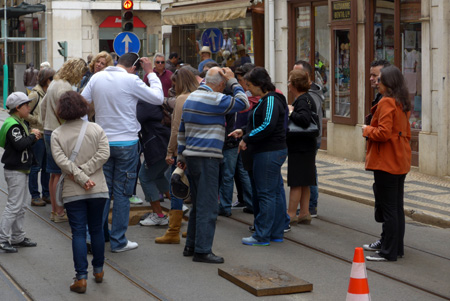
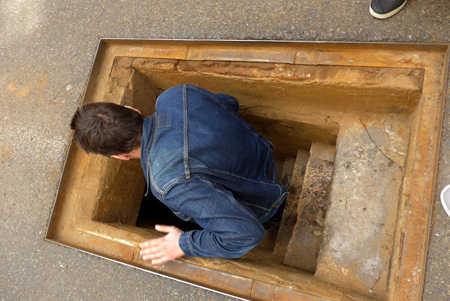
How amazing to be in out-of-sight Roman ruins dating from the first century AC! According to our guide, the latest studies have discovered that the galleries are built on a type of cement that Romans frequently used to stabilize soil. The Lisbon riverfront would have certainly needed it. Instead of baths, the current theory claims the structure served as a cryptoportico, a foundation for something larger above. Another of these structures can be found in Portugal in Coimbra, & I’ve seen one in Arles as well. Whether the galleries served any other purpose —perhaps as storage— is unknown at present.
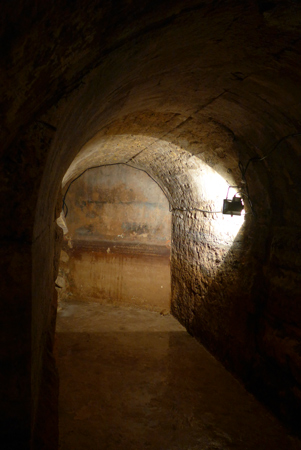
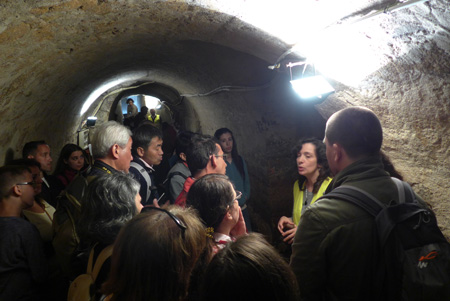
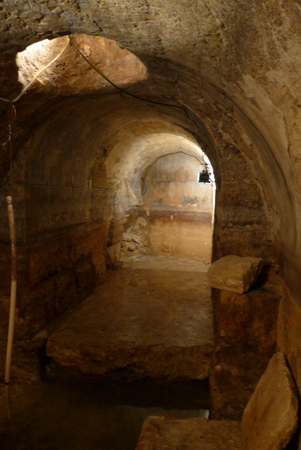
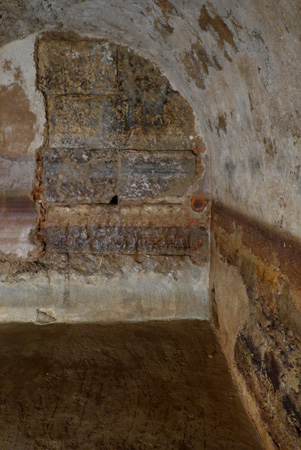
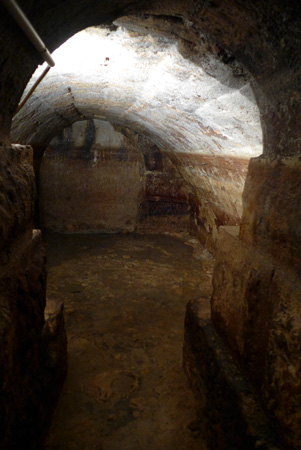
The reason the city government hasn’t turned the cryptoportico into a permanent monument is because the Rio Tejo wants to reclaim its territory. A large fracture in one of the archways allows water from the river to pour in & keeps the entire structure always under water. Pumps need 14 hours to empty the galleries for visitors, then need to run constantly for the entire time they are open to the public. Modern evidence of the river’s power can be seen inside the Terreiro do Paço Metro station… just look for water seeping in between the azulejos:
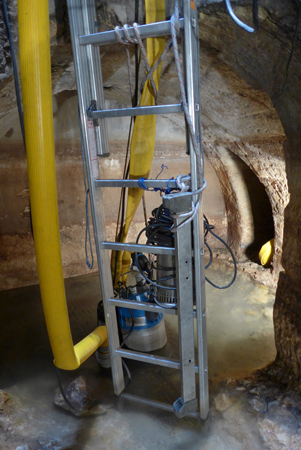

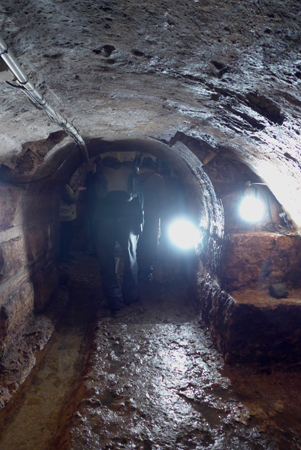


In fact, local residents used the galleries as a source of drinking water before pollution became a problem. And big building blocks (silhares or ashlars) show great technical skill:
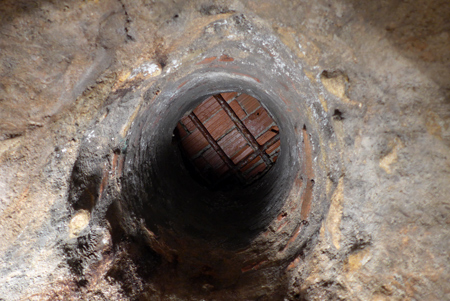
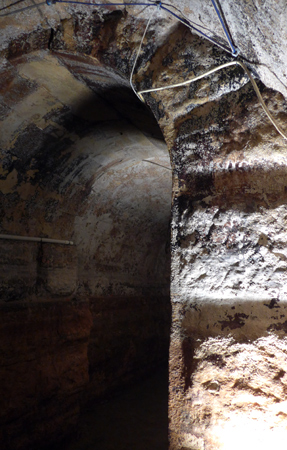
Although we couldn’t visit the entire network of galleries as seen in the sketch above, the few rooms we saw left quite an impression. Water has preserved the cryptoportico for 2,000 years, original colors are everywhere & city planners used its stability to rebuild one of the most important areas of Lisboa after 1755… a wonderful example of urban renewal. But if you aren’t in town when the galleries are open, the next best thing are Roman & Moorish-era remnants unearthed during the remodel of a downtown bank. Kudos to the staff who gave non-technical but not overly simplified explanations to both locals & patient tourists, all in wet & humid conditions over the noise of the pumps. Obrigado!
